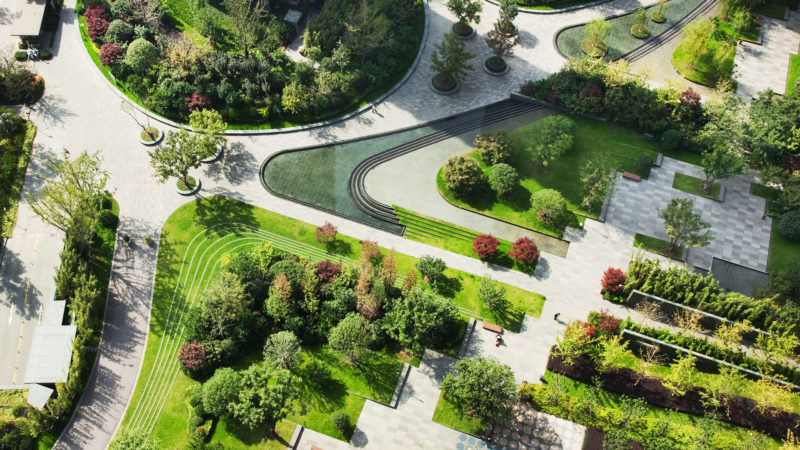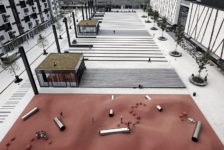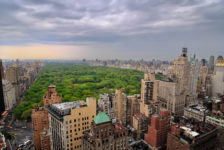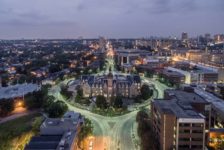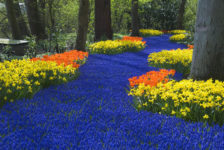In this article we examine what knowledge young professionals lack about planting that every landscape architect should know. In the pursuit of a landscape architecture degree, students have the opportunity to acquire a wealth of knowledge on planting, but as with other subjects there are some students who take this issue more seriously than others. Very often creating planting plans is reduced to composing different spatial forms due to size, shape, or aesthetic qualities of vegetation. In theory, designers are always able to make a space more attractive to the user by applying appropriate plantings, mainly because most people enjoy colorful combinations of blooming flowers. However, ornamental plantings aren’t the only situation where plants can be used. Treating vegetation as a vital element of the landscape can make the space more desirable by framing individual spaces with plants or by creating a specific rhythm of greenery, which could direct the viewer’s eye to the desired place. However, unlike hardscape elements, plants cannot be chosen simply because they “look good” or “match” the site. Rather, a variety of elements must be considered including planting zone, water needs, light requirements, and soil acidity, to name a few. It is important to keep in mind that what appears great on paper, unfortunately, doesn’t always work in the real world, so care must be taken to choose the appropriate plantings for each site.
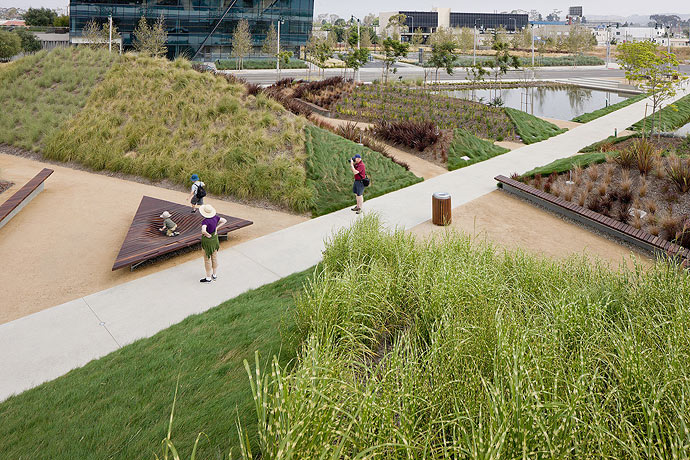
Playa Vista Central Park in California by Michael Maltzan Architecture + Office of James Burnett. Credit: Michael Maltzan Architecture
Planning the Future Garden Time will always tell if we have selected the proper plants. This is where I would like to highlight the words “plant selection“ because the rest of the article will be dedicated to this issue. Planting projects should be planned in such a way that the final product looks as if the designer envisioned it even many years after completion. Many graduate landscape architects also forget that plants vary in form and growth rate, so the planned effect is not always visible right away. Designing too many plants per square meter is often the result of a lack of such knowledge. Additionally, young professionals often underestimate horticultural knowledge, but plant specification is a very important skill. Apart from the fact that plants are supposed to look as the designer planned, they should also fulfill a number of environmental and natural conditions. The following elements are analyzed below.
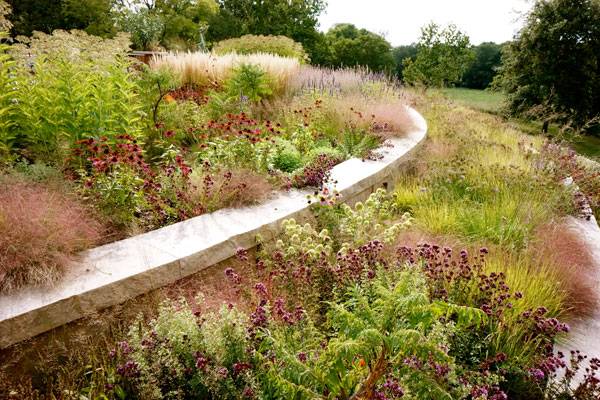
A planting scheme of perennials and grasses by Missouri-based garden designer Adam Woodruff. Credit: Adam Woodruff
Climatic Conditions All plants are sensitive to varying temperatures, so selecting plants that work in the specific hardiness zones should always be taken into account. These zones were developed by the United States Department of Agriculture (USDA) and they are geographically defined areas where a specific category of plants are suitable to grow and function normally. Mostly, it is related to the ability to resist the minimum temperatures in individual zones, so in some countries it is also known as frost-resistant zones. If the plant is hardy to a specific zone it means that it’s able to resist the lowest temperature assigned to this zone. While planning plant selections there are also a variety of elements due to climate that must be considered including temperature pattern, annual rainfall, snow cover, direction of dominating winds, and length of vegetation period, to name a few.
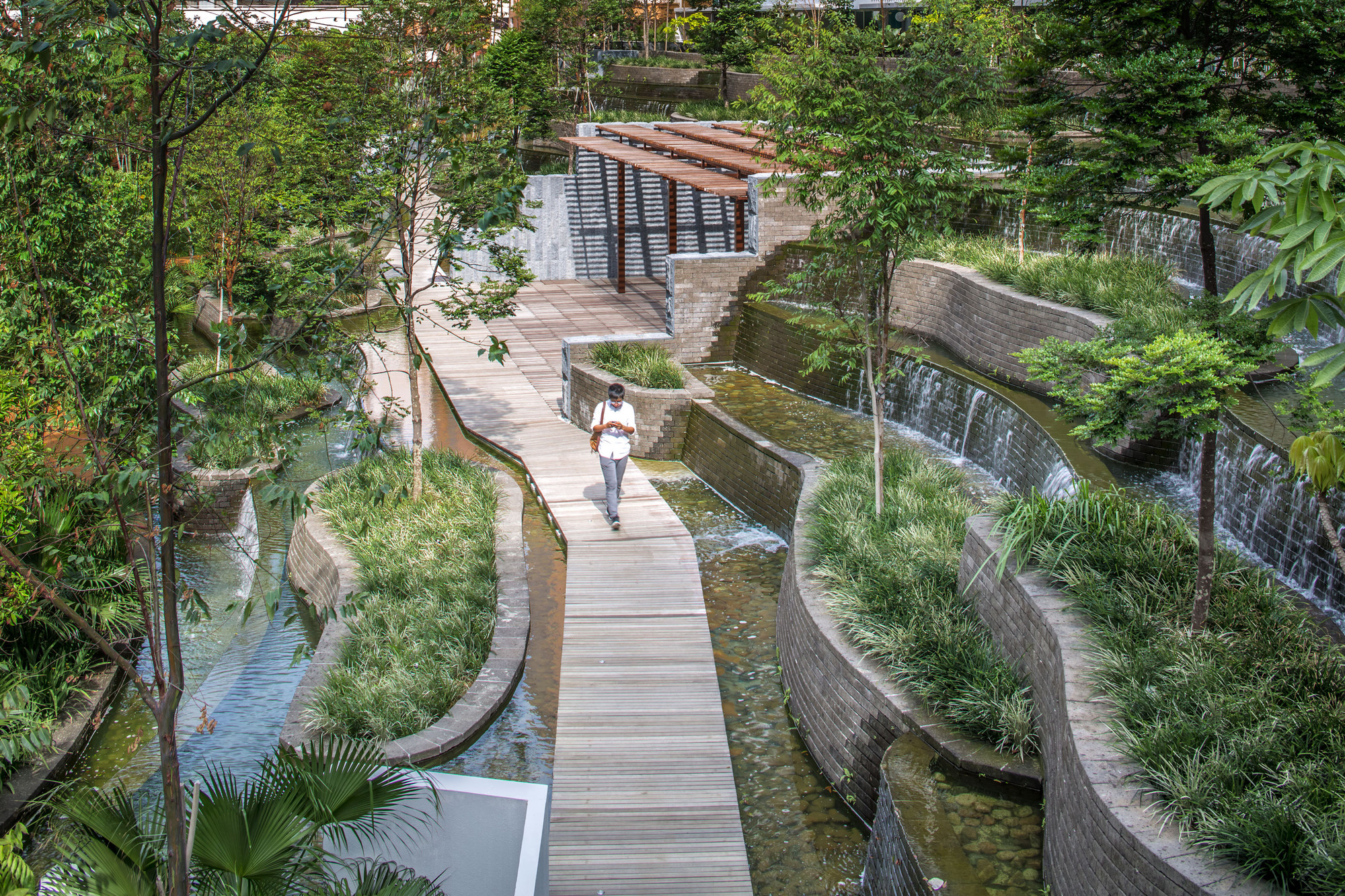
The Minton located in Singapore by DP Architects. Credit: Marc Tey Photography
Soil Conditions I don’t think it’s necessary to reiterate how important the substrate is in the case of plant selection. Knowledge about which species of plants need acid, alkaline, or neutral soil is very useful. With this information, the right substrate can be prepared. Along these lines, knowing which plants to group together is also important, as is moisture content. Some plants need drier substrate than others and by grouping plants by their soil and moisture needs one can help to ensure longevity. Finally, soil permeability and fertility is another consideration that is worth mentioning. Of course, it all comes down to the plants’ overall environmental requirements. Location The location is partially related to the previously discussed topics. However, there are also aspects that are worth further investigation. Factors such as site topography and how much space can be planted must be considered. A good practice is to perform shade, insolation, and wind shelter analysis of the site for each location. Also, it is important to keep in mind that every plant needs a different environment to thrive.
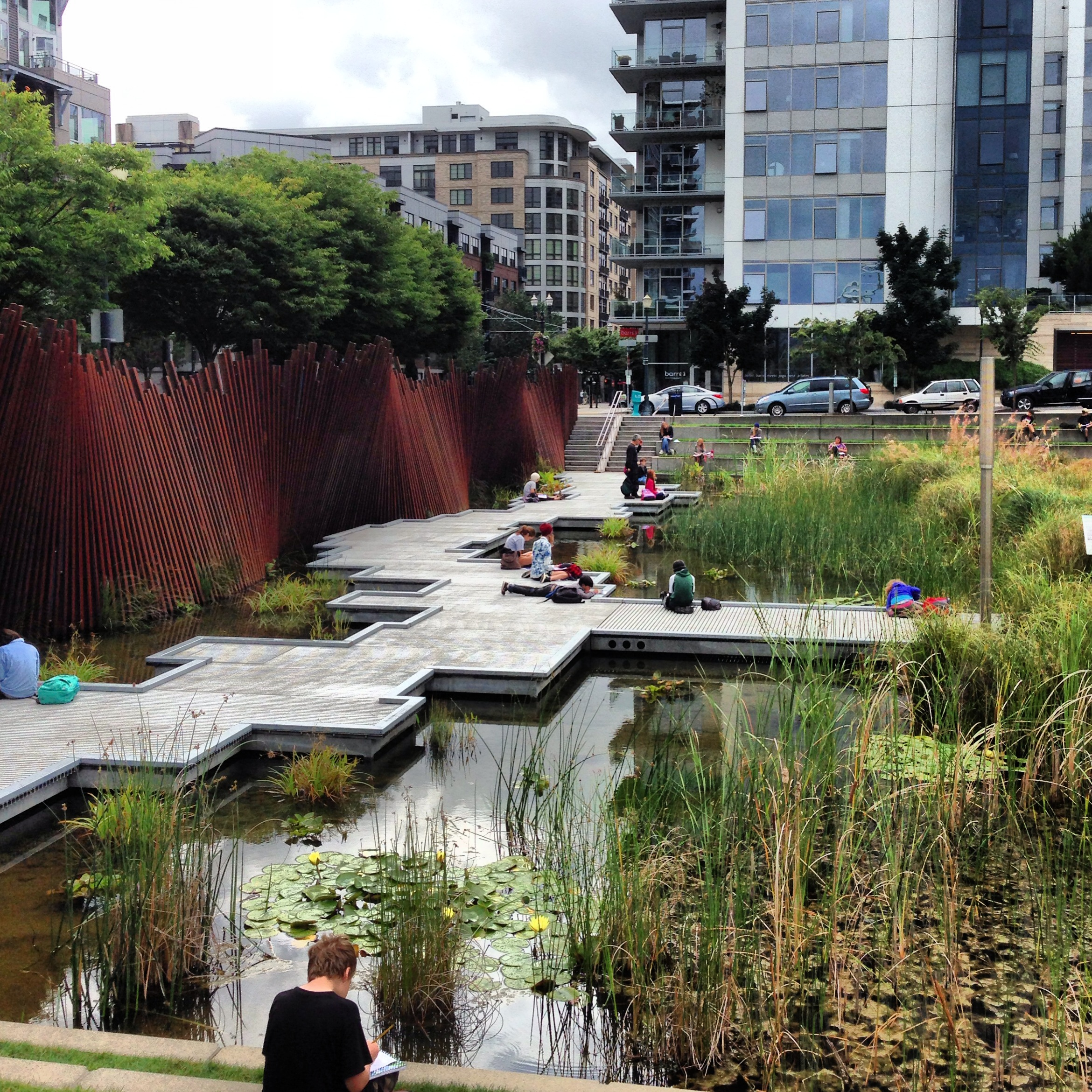
Tanner Springs Park in Portland, Oregon by Atelier Dreiseitl and GreenWorks PC. Credit: Debbie Lusk
Furthermore, only some plants are pollution-tolerant so it’s important to select proper plants for urban or industrial areas. In addition, soil reclamation will be needed, in some cases, before planting the chosen vegetation for heavily neglected sites. Some of the most useful information that is strongly underestimated by graduate landscape architects is knowledge of phytosociology—the science relating to plant communities. Using native species to design is, in my opinion, the best practice for plant selection. The use of plants that would have taken part in an ecological succession will give us a higher probability that the plants will flourish. So, ask yourself…what plants would have settled in the site if it was left untouched? However, what can’t be forgotten is that some native species are invasive and it’s strictly recommended to avoid them. Physical Aspects There are many attributes that are responsible for the visual effect. After rejecting plants that do not meet the requirements of the given habitat, if one is wanting to increase the project value then plants should be chosen for such features as:
- plant form (spreading, columnar, dense, conical, spherical, etc.)
- color (ornamental flowers, leaves, fruits)
- size (tall, medium, low trees/shrubs)
- speed of growth (quick-growing, slow-growing)
- structure of plants (deciduous, coniferous)
- discoloration of leaves in autumn or evergreen species

Public plaza of the Galaxy SoHo designed by Zaha Hadid Architects and EcoLand Design Group in Beijing. Credit: Hai Zhang
It’s critical to keep in mind that the appropriate plant spacing will have a huge impact on the final result, therefore it’s key to consider the size of the adult plant. Ultimately, schools should put more emphasis on learning horticultural knowledge as well as basic issues about plant physiology. Understanding these aspects will allow future landscape architects to better plan plantings and become more well-rounded in their chosen occupation. The most important thing is to explore the area and select and segregate the plants according to their habitat requirements. Of course, a separate aspect is the subsequent care of plants, but that is a topic for another article. Do you agree that horticultural knowledge is very important in the landscape architectural profession? Let us know what you think and leave a comment. Recommended Reading:
- Planting Design: 10 Things to Consider When Designing with Plants by Jeanne Connolly
- 10 Projects That Make Excellent Use of Planting Design by Elisa A.M.Varetti
- Key Insights on Planting Design in our Interview with Top Plantsman Adam Woodruff
— Featured image: Jiang Wan Cheng Phase 1 | Nanjing, China | Cicada | 2016
Published in Blog


